At the turn of the 19th and 20th centuries, quite a few monuments were made in Hungary, and the capital of the country was characterized by a real sculptural fever. The public sculptures of Kodály Körönd were also made at that time, namely a total of four works depicting the greats of the nation: between 1902 and 1905 the statues of Gábor Bethlen, István Bocskai, János Pálffy and Miklós Zrínyi were inaugurated here.
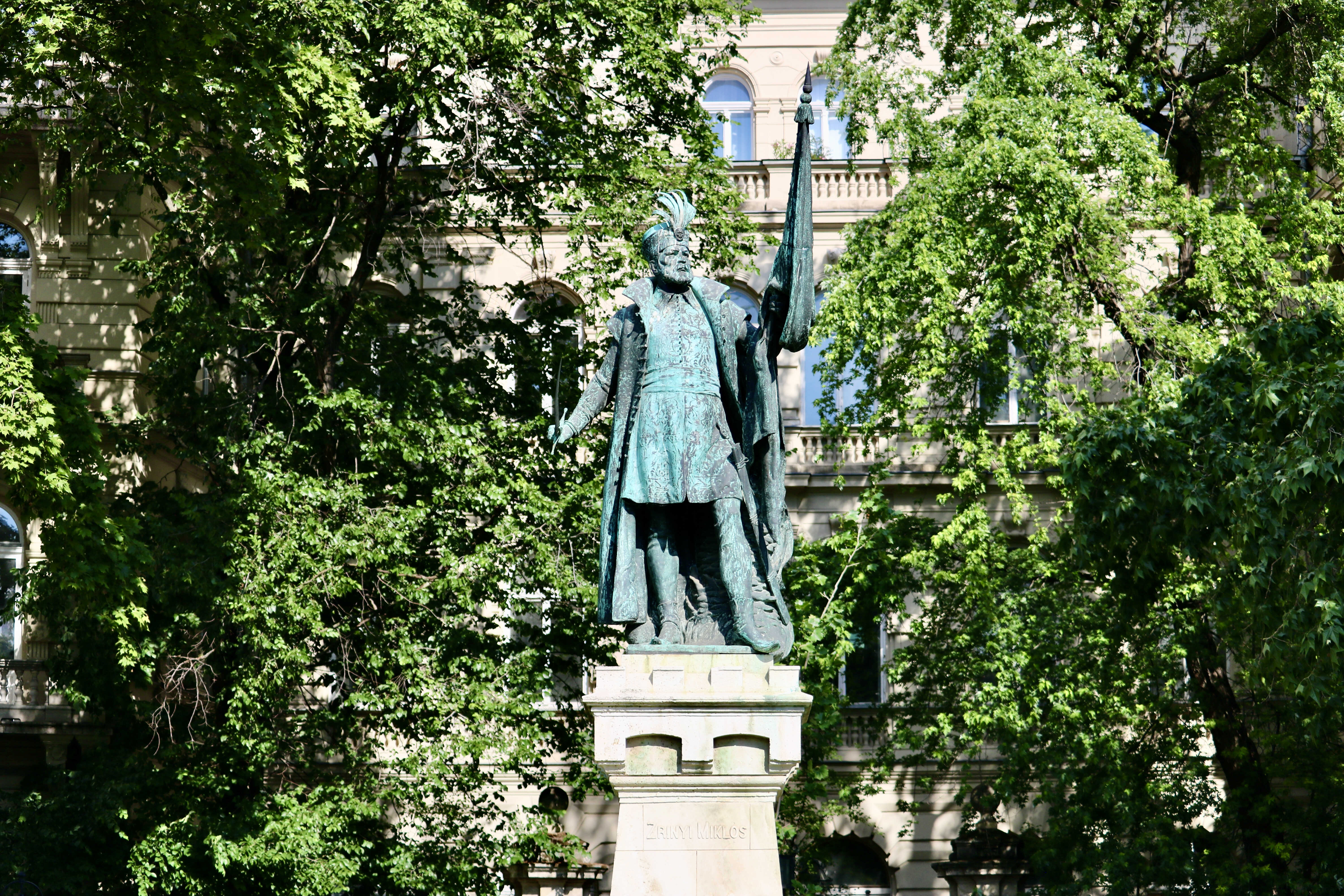
The bronze figure of Miklós Zrínyi, the hero of Szigetvár on the Kodály Körönd today (Photo: Júlia Kozics / pestbuda.hu)
The erection of the new monuments is due to Ferenc József, as the king decided in 1897, 125 years ago - in his note to Prime Minister Dezső Bánffy dated 25 September 1897 - that he wanted to donate ten statues to Budapest at his own expense. There are also statements in the text that the sculptures should adorn the appropriate squares of the cathedral, "at the same time perpetuating the memory of the outstanding figures of the past who excelled in various spaces of national life."
The document addressed to Dezső Bánffy also contained the names and the justification: "Hereby I commision the creation of sculptures depicting Gerard of Csanád, the martyr bishop who died for Christianity, Péter Pázmány, the devout archbishop of Esztergom, István Bocskay and Gábor Bethlen, princes of Transylvania, János Hunyadi and Miklós Zrinyi, the champions of the homeland and Christianity, Count János Pálffy, the commander-in-chief of Hungary who earned great merits in the defense of the throne, the anonymous clerk of King Béla [Anonymus - ed.] who wrote the history of the Conquest of the Carpathian Basin, István Verbőczy, the famous jurist and his popular lutenist, Sebestyén Tinódi and I entrust you with implementing this decision of mine ”- as it can be read in the 8th booklet of 1897 of the journal Erdélyi Múzeum.
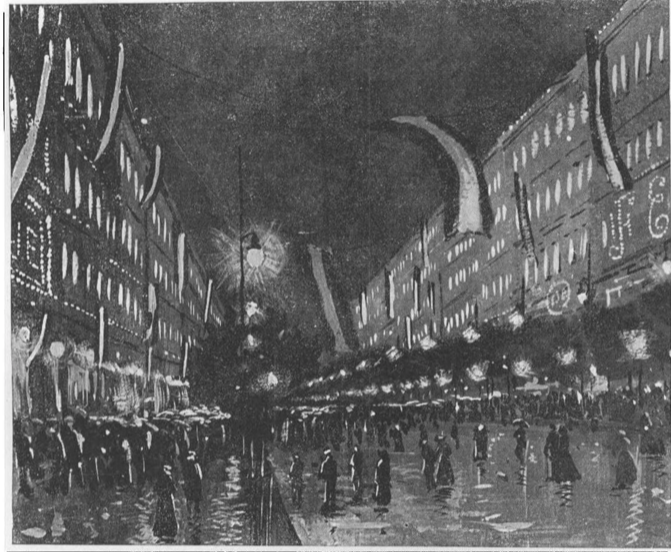
Decorative lighting of Budapest in graphics, after the Hungarians found out that Ferenc József is donating ten statues to the country (Source: Arcanum)
The ruler’s generous offering was a huge success across the country. It provoked such enthusiasm that Budapest and several Hungarian cities celebrated the decision with decorative lighting, the Queen was greeted with applause, and the National Assembly issued a homage to the king, who "has the power of enthusiasm and uniting powers for greater purposes and whose family is united with the fate of the nation ”- as it can be read in Sándor Márki 's book published in 1907, entitled I. Ferenc József, Magyarország királya [Franz Joseph I, King of Hungary].
In its inscription of thanksgiving, adopted on 4 October 1897, the National Assembly also stated: "a country and nation can only expect to prevail for long if it looks back to its predecessors with piety, and if it gives heed to the great lessons of the struggles, glories and declines of the past give."
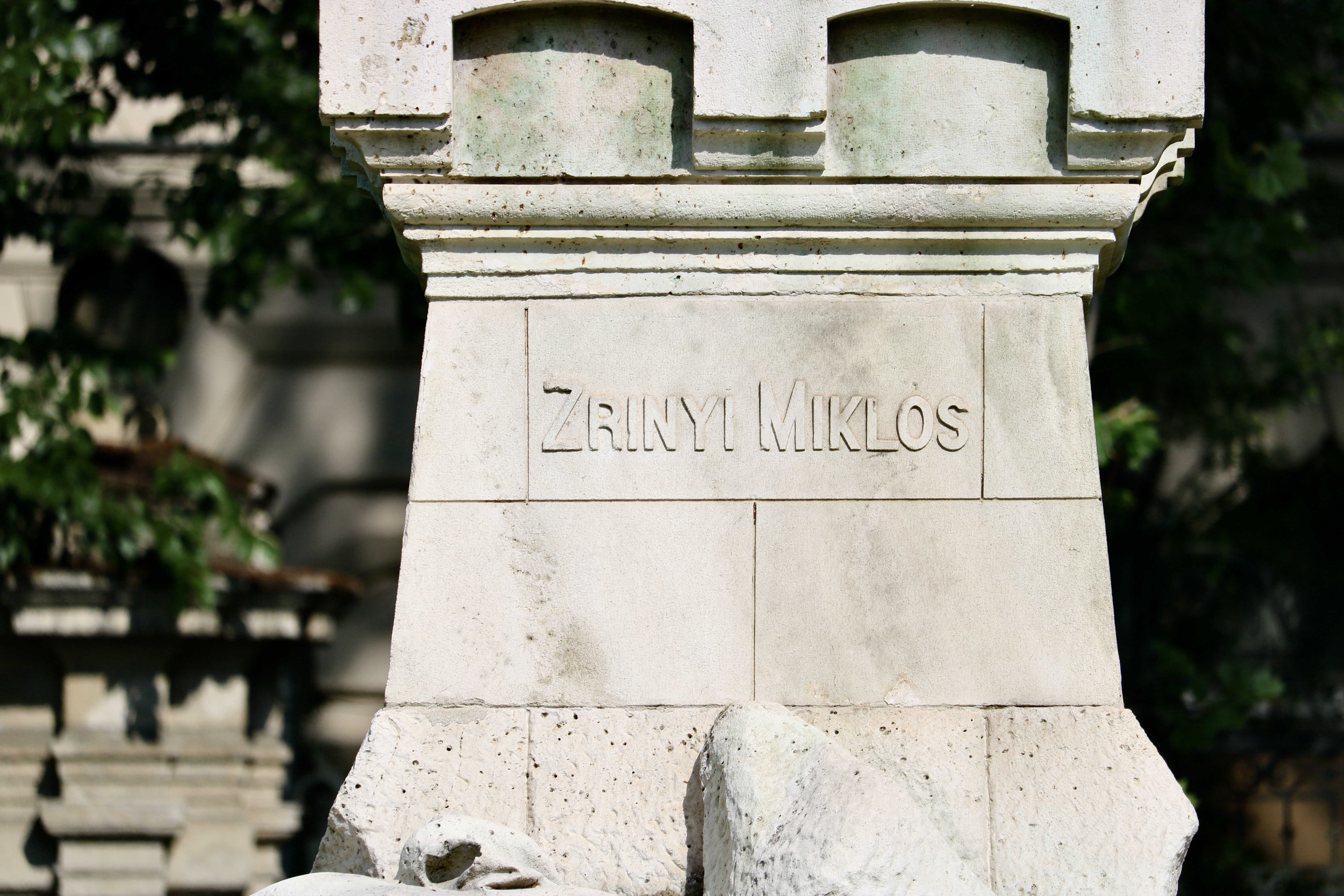
The pedestal of the bronze statue of Zrínyi on the Kodály Körönd (Photo: Júlia Kozics / pestbuda.hu)
The Pesti Hírlap wrote on 18 July 1914, that it is almost difficult to imagine the great enthusiasm that swept through the streets of Budapest at that time, groups of people flocked together and the university youth organized a torchlight procession to glorify the king. The special editions of the newspapers appeared at noon, and the audience was in a hurry for the free copies.
It may seem interesting that the monuments of the Transylvanian princes István Bocskai and Gábor Bethlen are also among the ten statues mentioned, despite the fact that they both fought against the Habsburgs in the hope of freedom - and the Hungarians interpreted that Franz Joseph forgave to these great figures of Hungarian history because of their rebellion against Habsburgs. It is clear that the monarch's inauguration program was strongly politically charged.
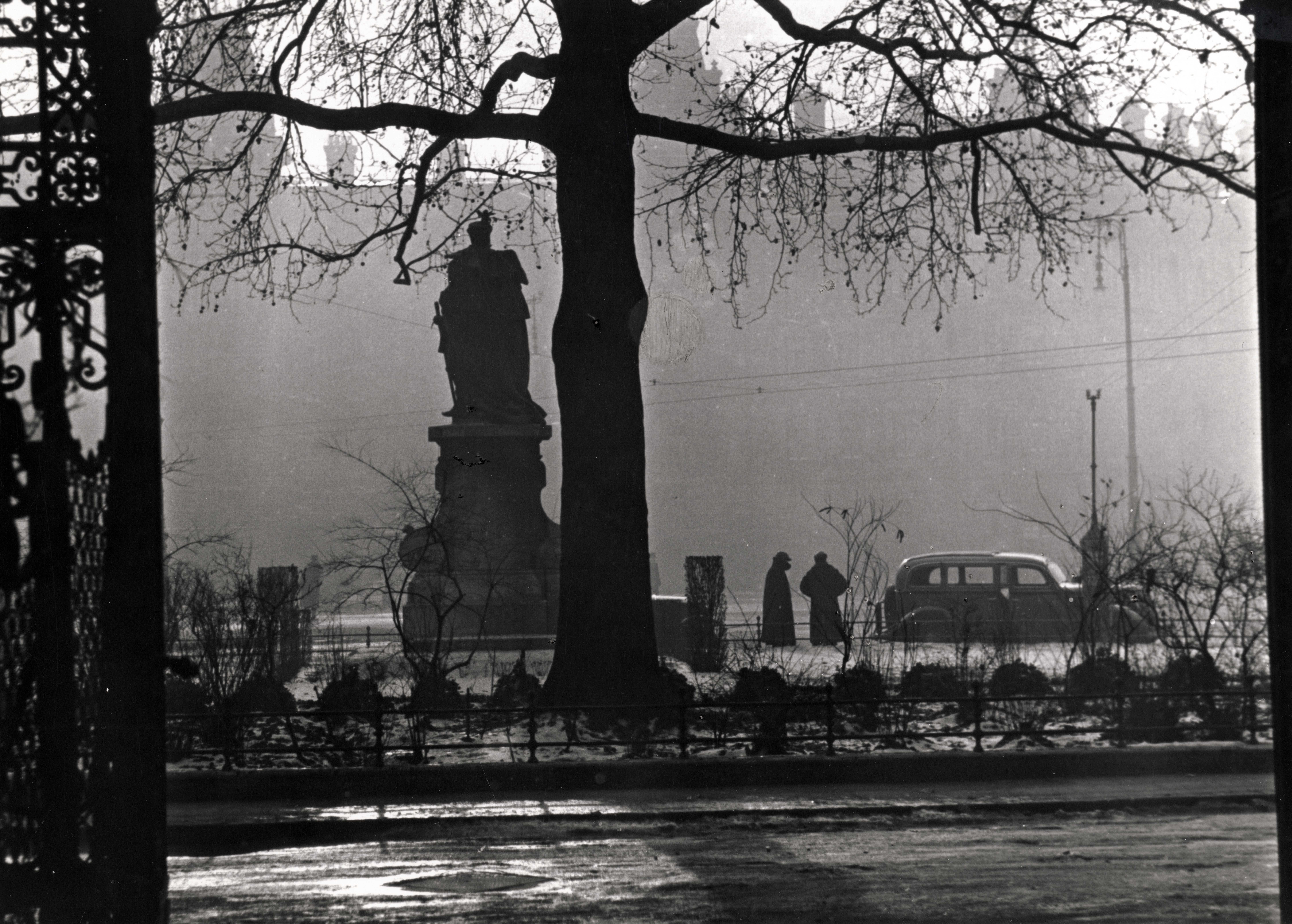
Statue of Gábor Bethlen on the Kodály Körönd in 1938 (Photo: Fortepan / No.: 149516)
As the rescript of Franz Joseph also stated that the statues should be placed in the suitable squares of the capital city, a decision had to be made on the locations. At the suggestion of Prime Minister Dezső Bánffy, the Kodály Körönd was designated for the erection of monuments to Miklós Zrínyi, Gábor Bethlen, István Bocskai and János Pálffy, and this proved to be a very worthy space, as the elegant Andrássy Avenue was built not long before for the celebration of the Millenium - together with the Underground Railway -, the most beautiful boulevard in Budapest.
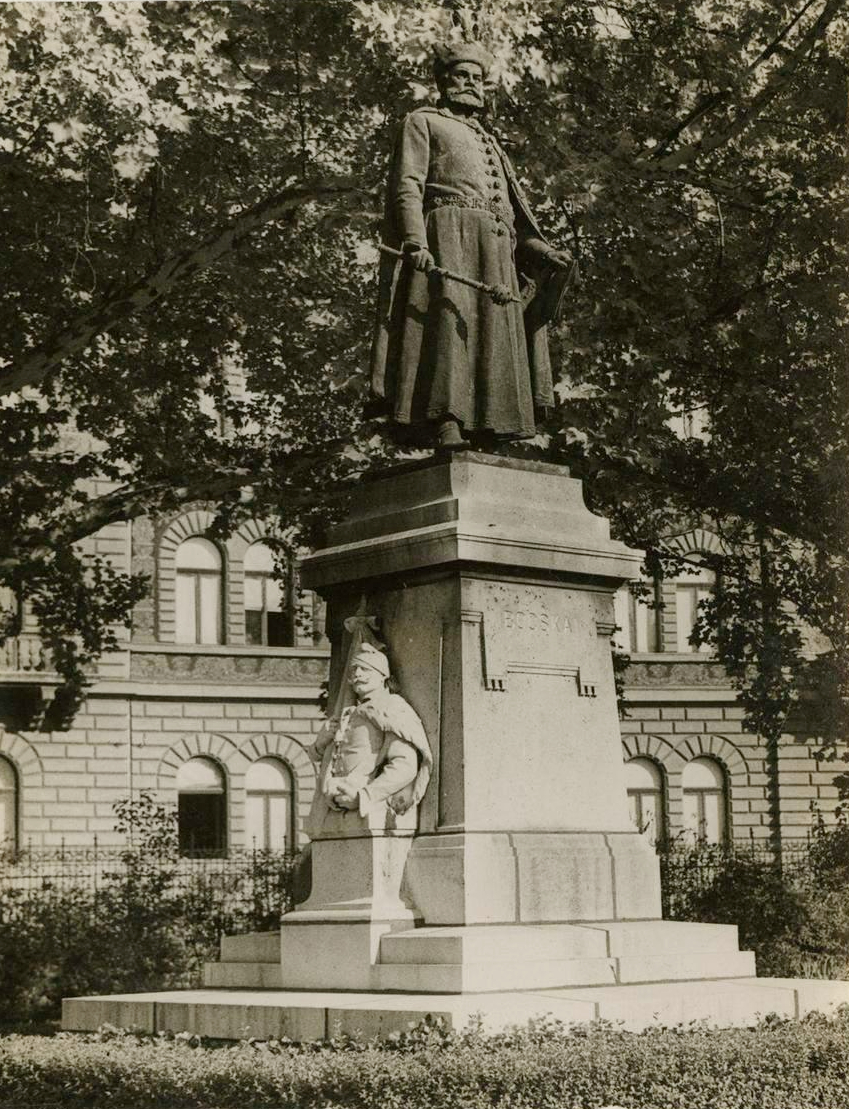
The statue of István Bocskai at its original erection in Körönd in the 1930s (Source: FSZEK Budapest Collection)
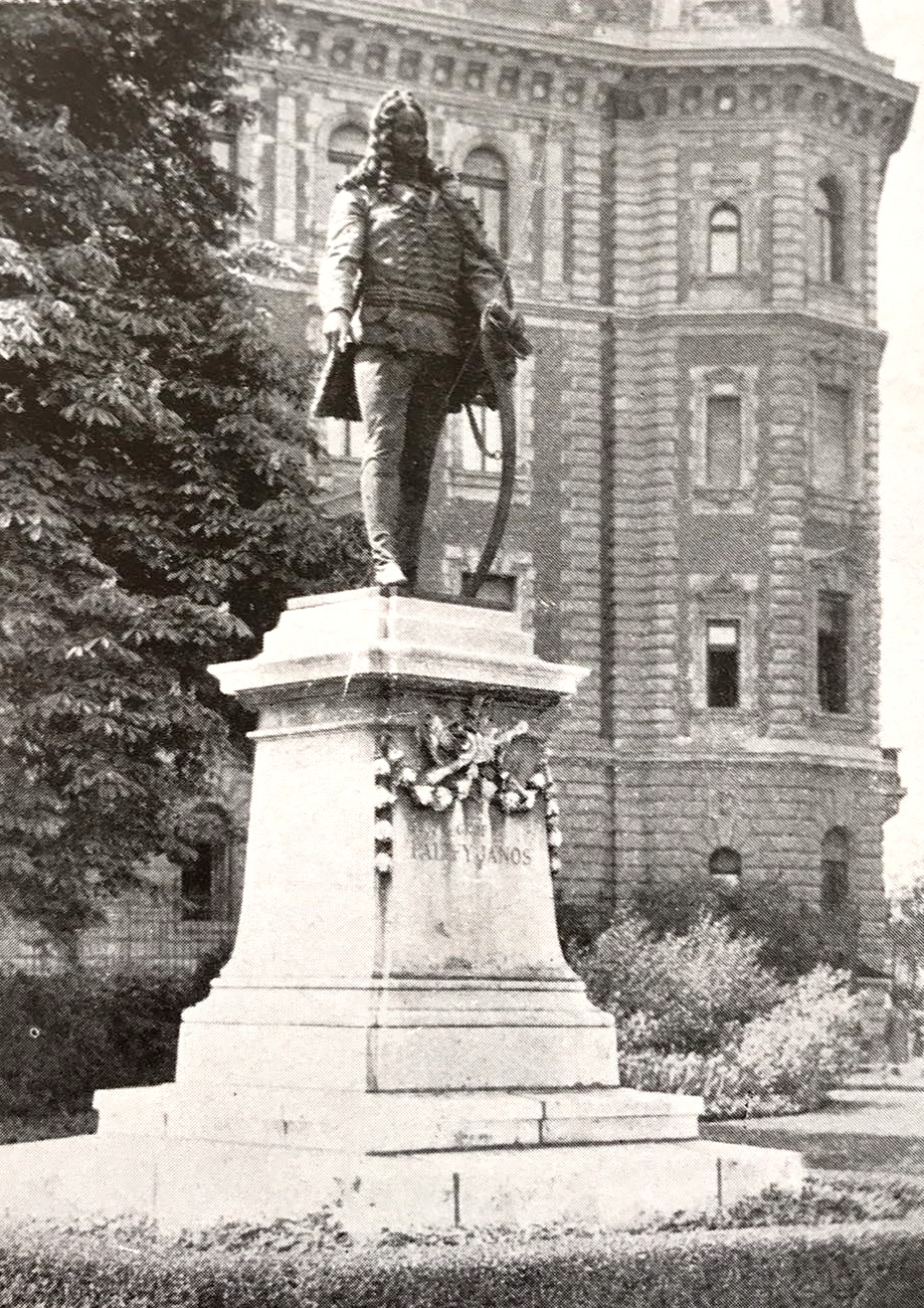
The statue of János Pálffy during its erection
The work of György Vastagh Jd., the statue of Gábor Bethlen, was completed in 1901, but it was finally handed over in May 1902 together with the statue of Miklós Zrínyi by József Róna. Of the ten monuments, these two were erected for the first time. We also know from the 1 June 1902 issue of the Vasárnapi Ujság that Prime Minister Kálmán Széll delivered a speech 120 years ago at the inauguration ceremony of the statues, emphasizing that "these two statues are also a testament to the sympathy of the nation and its king." József Márkus, Mayor of Budapest, and Mayor János Halmos also appeared on behalf of the capital. The Prime Minister solemnly handed over the statue to the capital, and Mayor Halmos promised that the capital would always take care of them.
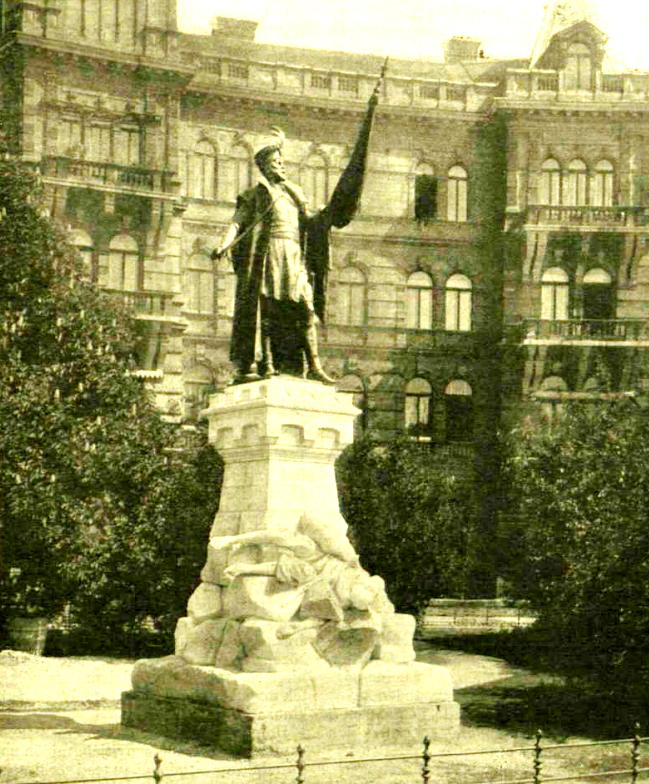
Statue of Miklós Zrínyi (Source: Vasárnapi Ujság, 1 June 1902)
The figure of Miklós Zrínyi stands on a high pedestal, the lower part of which is shaped as a rock and the upper part depicts battlements. A fallen Turk can be seen at the feet of the hero of Szigetvár. Gábor Bethlen leans on a pickaxe with his left hand, holding the document of peace treaty of Nikolsburg in his right hand.
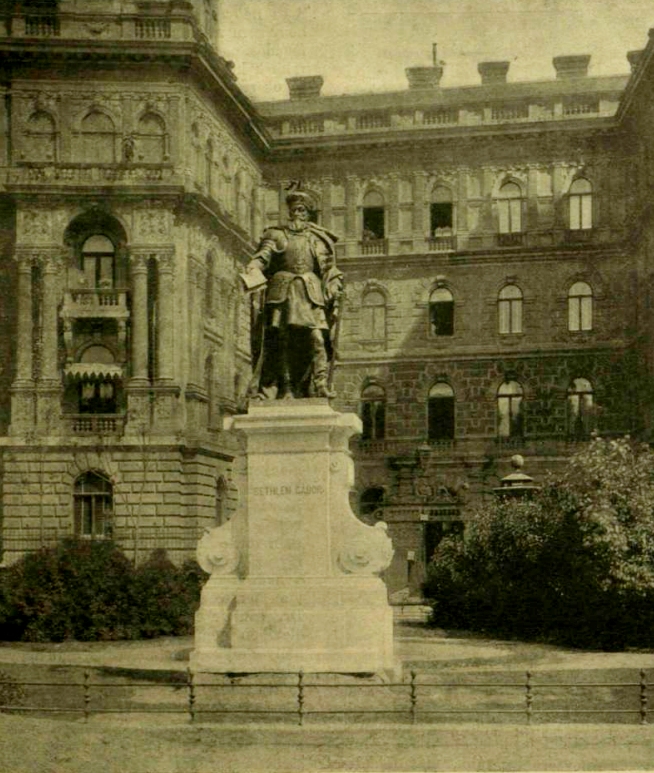
Statue of Gábor Bethlen (Source: Vasárnapi Ujság 1 June 1902)
The other two monuments of Kodály Körönd were unveiled shortly afterwards, the statue of István Bocskai, the work of Barnabás Holló, which depicts the Transylvanian prince with a mace and the document of the peace treaty of Zsitvatorok was erected the next year, in 1903, and the statue of János Pálffy, which was created by Károly Senyei, showing him in a cavalry general uniform with the Order of the Golden Fleece, was erected in 1905. Thus, the sculpture stock of the Körönd was complete.
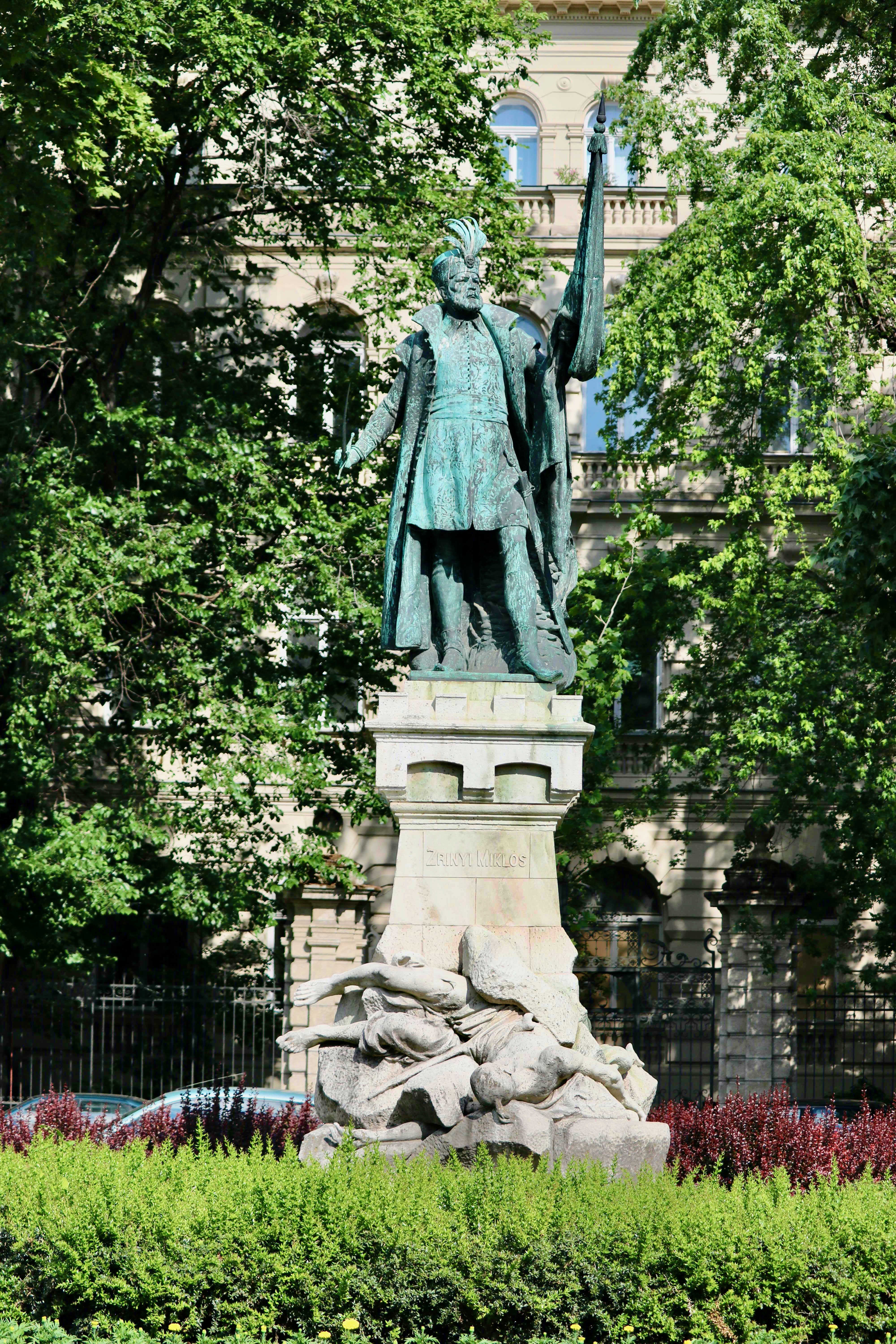
The statue of Zrínyi is the only one on the Körönd since 1902 (Photo: Júlia Kozics / pestbuda.hu)
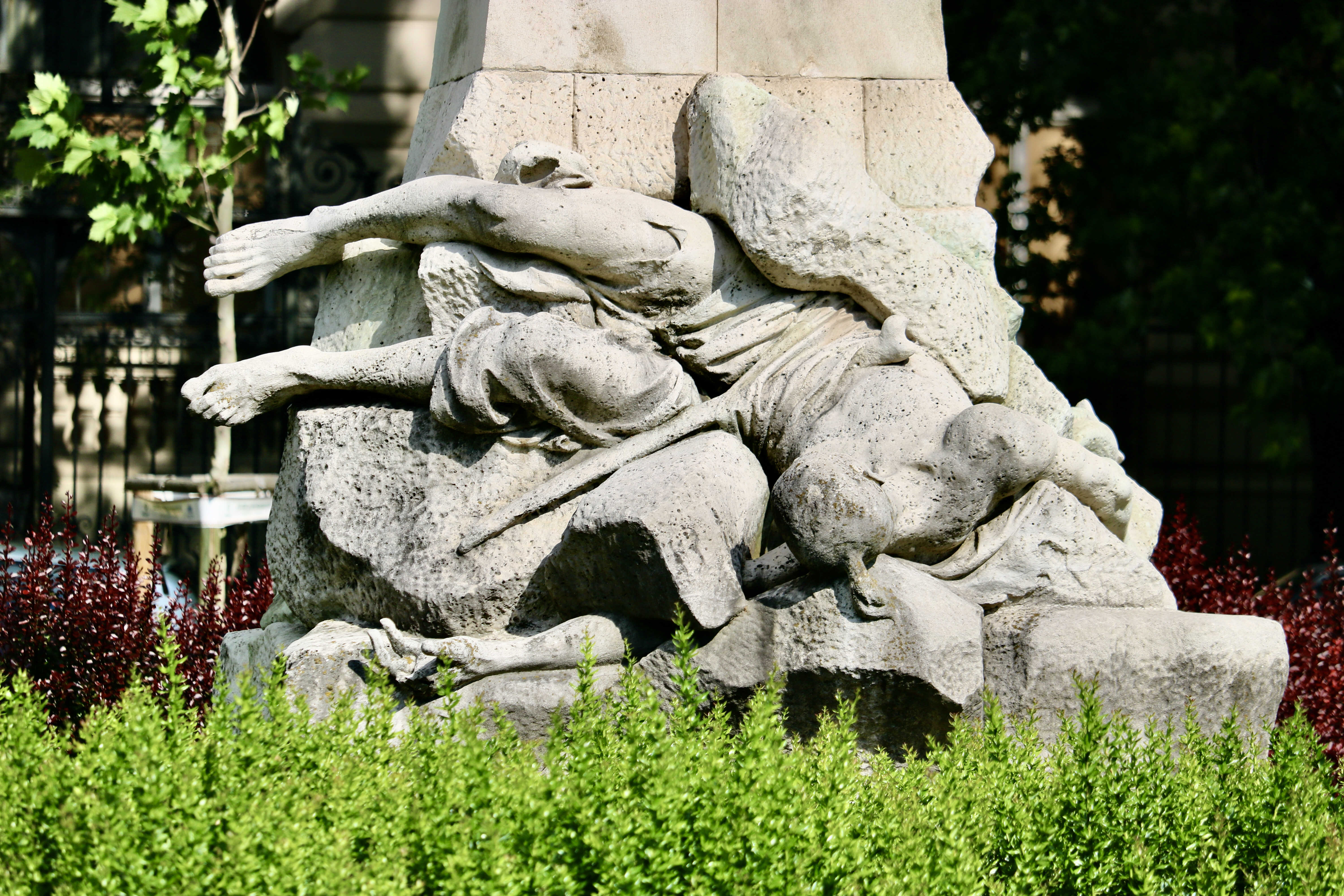
A fallen Turk can be seen at Zrínyi's feet (Photo: Kozics Júlia / pestbuda.hu)
During the Hungarian Soviet Republic, on 1 May 1919, the Communists covered the statues of the Körönd with red globes as they reminded them of the “world of lords”. In 1945, this scene was repeated.
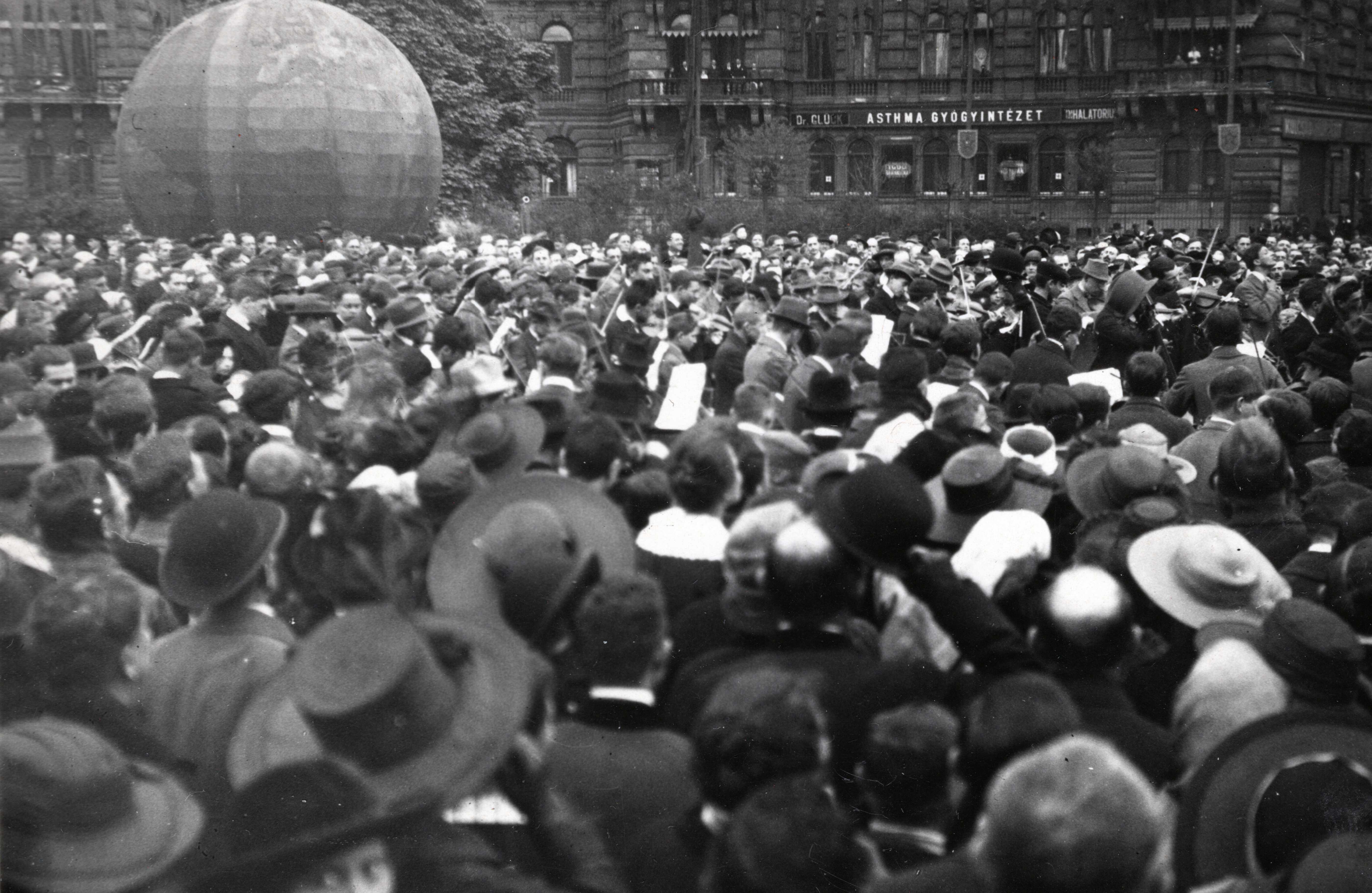
During the Soviet era, the statues of the Kodály Körönd were covered with red globes (Photo: Fortepan / No.: 131383)
After World War II, the removal of works ideologically unsuitable for the new political power from public spaces began in 1945. The statues of the five Habsburg rulers were demolished from the colonnade in Heroes' Square.
The vacancies required new works, and two of them were transferred from the nearby Kodály Körönd. This is how the statue of the Transylvanian princes Gábor Bethlen and István Bocskai came to Heroes' Square.
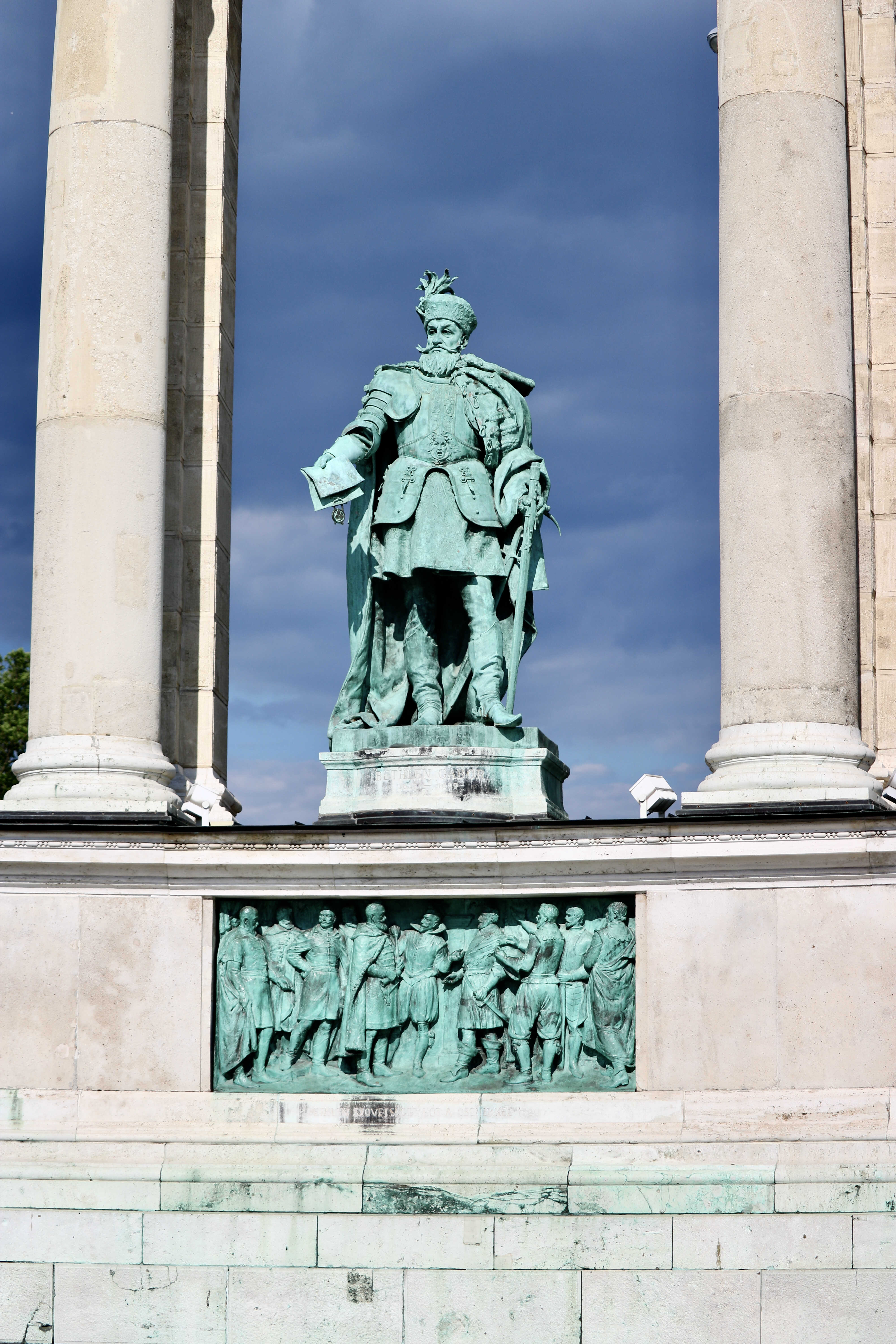
The statue of Gábor Bethlen was transferred from Kodály Körönd to Heroes' Square in the 1940s (Photo: Júlia Kozics / pestbuda.hu)
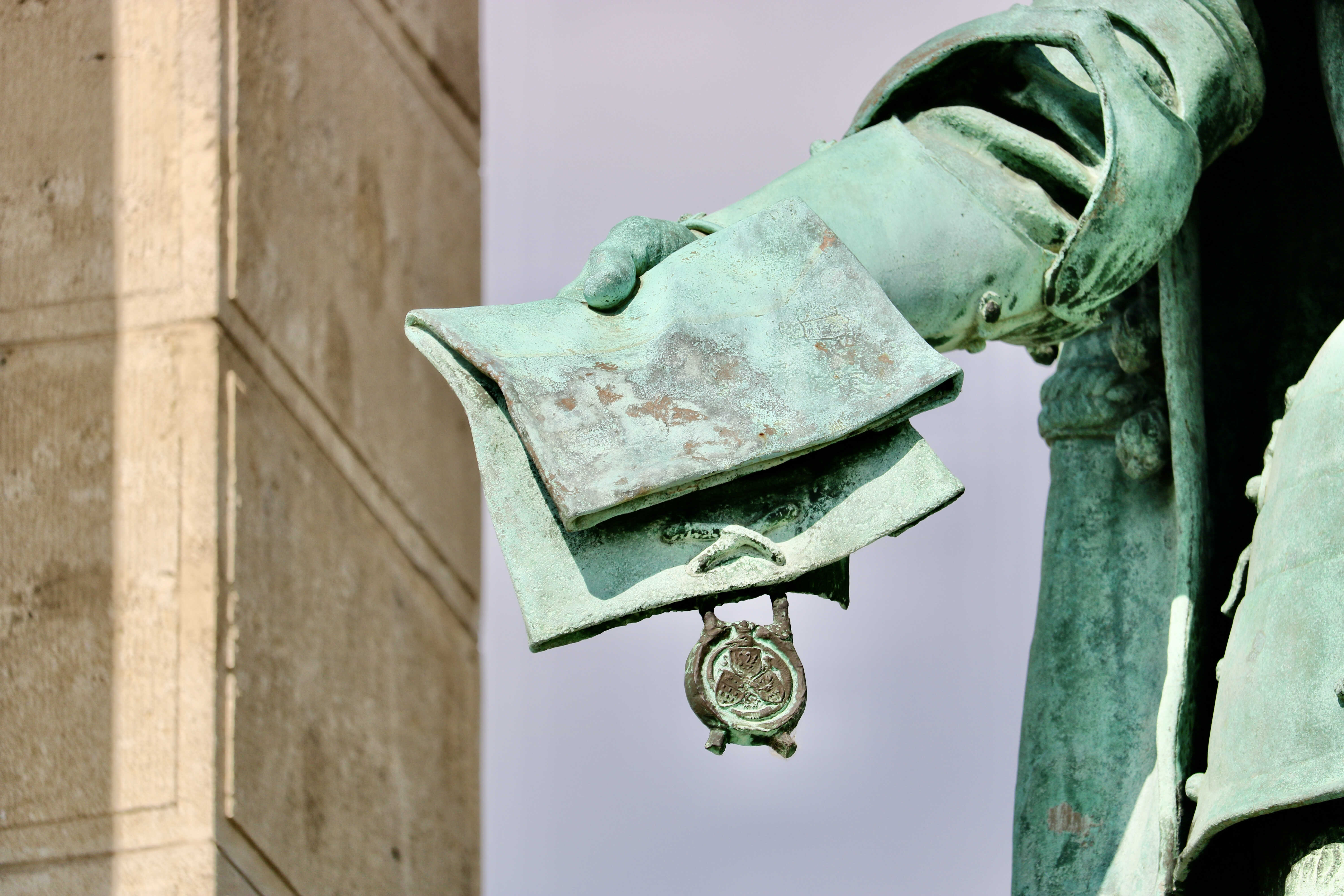
Bethlen holds the Nikolsburg Peace Treaty in his right hand (Photo: Júlia Kozics / pestbuda.hu)
The Habsburg-loyal János Pálffy could not stay on the Kodály Körönd either, his statue was removed in the 1950s. For a long time nothing could be known about his fate. Recently, the editors of the page Köztérkép [Public Map] found it in the 14th District, at 27 Pálya Street, in the site of the Fővárosi Önkormányzat Rendészeti Igazgatósága, where they took a photo of it.
The monument of Miklós Zrínyi is therefore the only one that has survived in its original place, on Kodály Körönd.
In the late 1950s, the statue of György Szondi, the hero captain of Drégely Castle, by László Marton was erected next to it in 1958, then the sculpture of Vak Bottyán, or János Bottyán, the legendary commander of the Rákóczi War of Independence, work of Gyula Kiss Kovács in 1958, and the statue of the poet Bálint Balassi, Pátzay Paul's work in 1959.
Cover photo: Bronze statue of Miklós Zrínyi, the hero of Szigetvár (Photo: Júlia Kozics / pestbuda.hu)

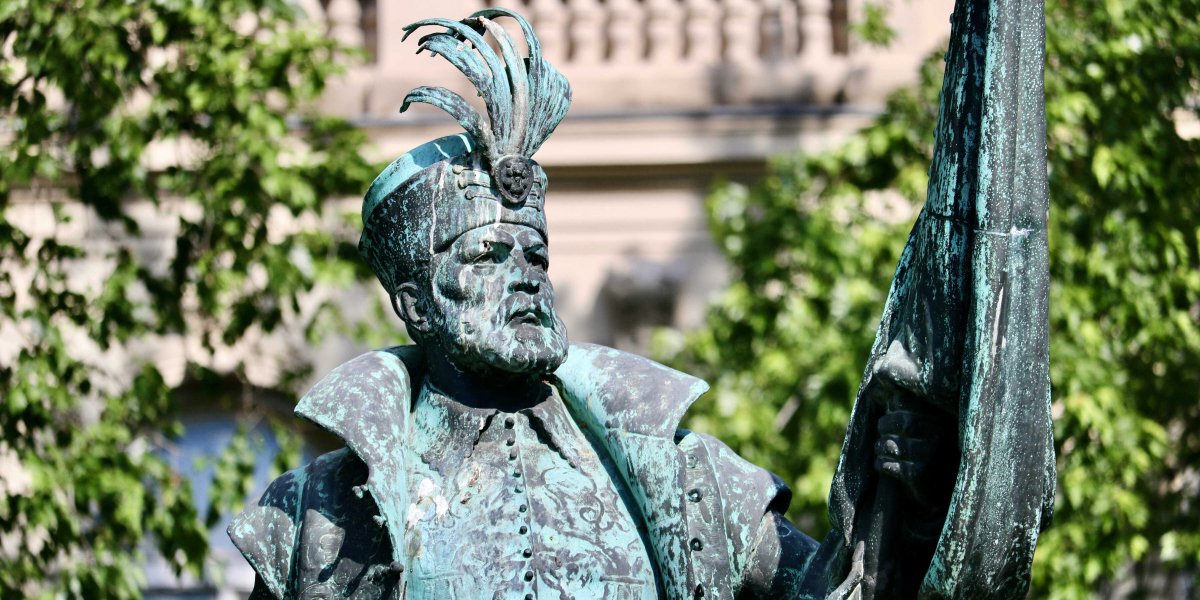
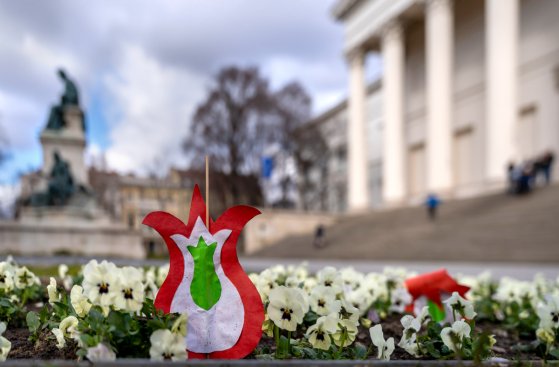


































Hozzászólások
Log in or register to comment!
Login Registration